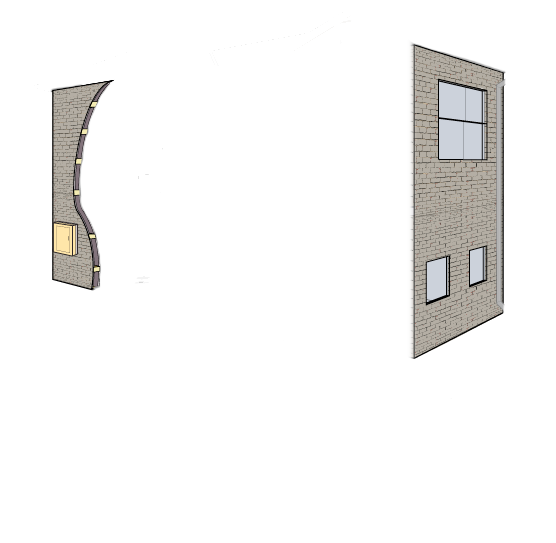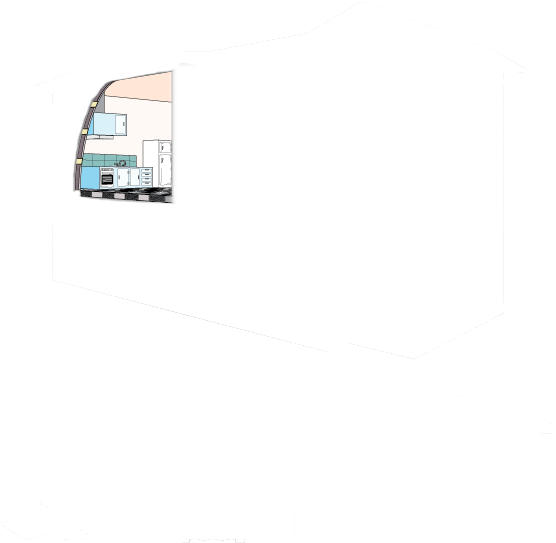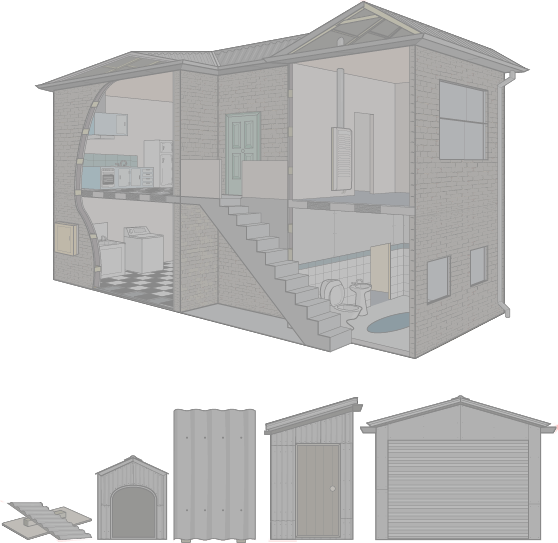Asbestos-containing materials were commonly used in house construction before the 1980s. As a general rule if your home was built or renovated:
- before the mid-1980s - it is highly likely that it has asbestos-containing products
- between the mid-1980s and 1990 - it is likely that it has asbestos-containing products
- after 1990 - it is unlikely that it has asbestos-containing products.
If you are thinking of undertaking any repairs, renovation or demolition work in your home (built or renovated prior to the late 1980s), please take some time to familiarise yourself with the types of products that may contain asbestos and where to find them.
Common locations where asbestos containing products can be present
Select a room or area below to identify the types of asbestos containing products which could be present




Bathroom & laundry
- Backing to wall/floor tiles
- Ceilings
- Hot water insulation set into walls
- Sheet walls
Exterior wall
- Electricity meter box lining
- Wall cladding
- Imitation brick cladding
- Window rope and putty
Kitchen
- Walls and insulation
- Splashbacks
- Backing of vinyl floor tiles
- Underlay sheeting for ceramic tiles
- Hot water insulation set into walls
Living room
- Heating flue
- Loose asbestos in the ceiling cavity
- Sheet walls
Outside
- Asbestos in soil
- Cladding and imitation brick
(on shed, kennel and garage) - Fencing
- Loose asbestos cladding
- Roof
Roof
- Downpipes (drainpipes)
- Guttering
- Lining under eaves
- Loose roof insulation
- Rainwater heads
- Ridge tiles
- Roof sheeting
The above tool is adapted from content developed by, and used with permission of, the Government of Victoria.
It is not possible to find out whether a material contains asbestos simply by looking at it. If you are not sure whether a material contains asbestos but think it is likely, play it safe and assume it does or get it tested by a NATA accredited laboratory. The Government of Victoria has published a list of asbestos-containing products. The WA Department of Health also have produced a document that contains pictorial examples of asbestos containing materials around the home.
Alternatively you can engage a person who knows how to manage the risks associated with asbestos including providing advice on whether it is asbestos and the removal, including whether you should use a licensed asbestos removalist.
If the asbestos containing material is in good condition it is best to leave it alone unless it is likely to be exposed and damaged. If it's in good condition and is left undisturbed, non-friable asbestos presents no known health risks.

